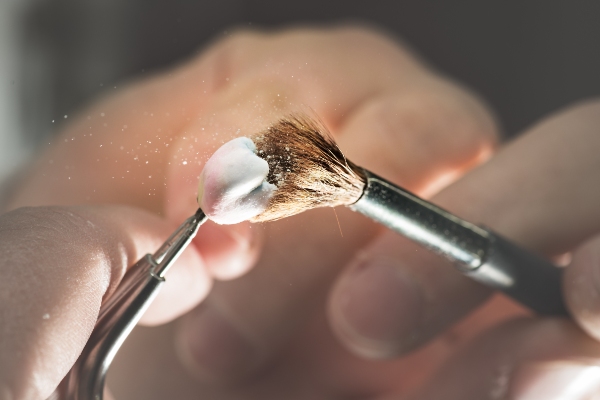The Different Types of Dental Implant Restorations

Dental implant restorations have transformed dentistry by offering a versatile and reliable solution for replacing missing teeth. This approach to smile restoration seamlessly combines durability and natural aesthetics, restoring oral function and appearance. Because implant restorations can support different types of dental prosthetics, they address a variety of needs while preserving oral health. Understanding the different types of implant restorations highlights their versatility and benefits for long-term oral care.
What is implant restoration?
Implant restoration refers to the process of placing a prosthetic tooth or teeth onto a dental implant, a titanium post that a general dentist or periodontist surgically inserts into the jawbone. The implant is an artificial tooth root that creates a stable foundation for the rest of the smile restoration (e.g., a dental crown, bridge, or permanent denture). This process not only replaces missing teeth but also restores chewing ability, speech clarity, and the smile's overall appearance.
Types of dental implant restorations
Implant restorations mimic natural teeth in function and appearance. They are custom-made to fit each patient's unique needs and can replace a single tooth, multiple teeth, or an entire arch. Thus, there is more than one type. A general dentist or periodontist will recommend one of the following types of implant restorations based on the number of teeth they must replace, the condition of the surrounding teeth, and the patient's oral health.
Single-tooth implant restoration
As the name suggests, a single-tooth implant restoration replaces one missing tooth. This type of restoration consists of three parts: the implant, the abutment, and the crown. The dental provider surgically inserts the implant into the jawbone, with which it fuses over time. The abutment is the piece that connects the implant to the visible part of the restoration (in this case, the crown).
Single-tooth implant restorations are an effective choice for patients with a single missing tooth because they do not rely on adjacent teeth for support. Unlike traditional dental bridges, which require grinding down healthy teeth, single-tooth implants preserve the integrity of the surrounding teeth. They also help maintain bone density in the jaw by stimulating the bone through regular chewing and biting forces.
Implant-supported dental bridges
A general dentist or periodontist may recommend implant-supported dental bridges when multiple teeth in a row are missing. Instead of relying on natural teeth for support, this bridge type is anchored to dental implants. This option provides a more stable and durable solution to tooth loss than traditional bridges.
The dental provider strategically places implants in the jawbone for an implant-supported bridge to act as an anchor. The number of implants needed depends on the length of the bridge and the patient's oral anatomy. Once the implants have fused with the bone, the provider will attach the bridge to the implants via abutments.
Implant-supported dentures
Implant-supported dentures are a solution for patients missing all or most of their teeth in one or both arches. Unlike traditional dentures, which rest on the gums, implant-supported dentures are anchored to dental implants. This design provides greater stability, preventing the dentures from slipping or shifting when patients eat or speak.
There are two main types of implant-supported dentures: bar-retained and ball-retained. Bar-retained dentures use a thin metal bar attached to the implants, while ball-retained dentures use ball-shaped attachments that fit into sockets on the dentures. Both options offer a secure fit and improved functionality compared to traditional dentures.
All-on-4® implant restoration
The All-on-4 technique is a popular choice for patients requiring full-arch restoration. This method uses only four strategically placed implants to support an entire arch of teeth. The dental provider positions the implants at specific angles to maximize support and stability, even in patients with reduced bone density.
All-on-4 restorations offer several advantages, including a shorter treatment time and the ability to receive a full set of teeth on the same day as implant placement. This approach eliminates the need for bone grafting in many cases. Further, the prosthetic arch attached to the implants is custom-designed to match the patient's natural teeth in appearance and function.
Get more information about implant restorations
Implant restorations are not only functional but also designed to enhance the appearance of the smile. From single crowns to full-arch solutions, each restoration is crafted with attention to detail, ensuring a natural look and feel. If you are interested in restoring your smile with implants, contact our New York team at New York Dental Office for more information.
Request an appointment here: https://www.newyorkdentaloffice.com or call New York Dental Office at (212) 548-3261 for an appointment in our New York office.
Check out what others are saying about our dental services on Yelp: Dental Implant Restoration in New York, NY.
Recent Posts
Aftercare and long-term care are vital for maintaining the results if you have recently undergone a dental restoration procedure. Maintaining the results does not have to be difficult; however, you must remain dedicated to caring for your new smile. Following the simple tips below will extend the life of your new dental work.No matter the…
There appears to be some overlap between dental restorations and cosmetic dentistry. However, people need to know the difference between the two because dental insurance may cover a dental restoration but not a cosmetic procedure. This article examines the key differences between the two types of dentistry and provides examples of each.The primary difference between…
A dental restoration can repair or replace a part of a tooth or its whole structure. Having this treatment means investing a significant amount of effort, money, and time. Making an informed decision to go through it will need a complete orientation. Here are the pros and cons of various dental restoration treatments that can…
A strong and stable dental restoration can replace your missing tooth. Many people suffer from tooth loss. Using removable dentures is a way to fill the dental space. This can prevent many dental issues from developing. Here are the dental restoration options available for your missing tooth.The dentist will assess the patient’s mouth and see…



